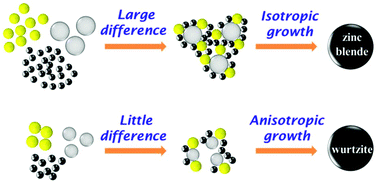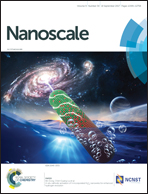Growth kinetics and mechanisms of multinary copper-based metal sulfide nanocrystals†
Abstract
Multinary copper-based metal sulfide (Cu-M-S) nanocrystals (NCs) usually have high absorption coefficients and near-optimum direct band gaps, which have been considered as novel photo-absorption materials for quantum dot-sensitized solar cells (QDSCs) and hole-transport materials for perovskite solar cells (PSCs). However, the formation and phase transformation mechanisms of Cu-M-S NCs during the solution-based preparing approaches are complicated. Herein, Cu-M-S NCs, including Cu2ZnSnS4 (CZTS), Cu2SnS3 (CTS), CuInS2 (CIS), and CuSbS2 (CAS), have been synthesized through solution-based hot-injection methods. Their formation and phase transformation mechanisms have been studied in terms of the growth kinetics. An effective method has been proposed to investigate the formation mechanisms of Cu-M-S NCs. The results suggest that CZTS, CTS, and CIS NCs are formed through an inter-reaction between metal sulfides rather than the classical cation exchange reactions, and CAS NCs are formed based on the CuxS structure; these findings provide new insights into the formation of Cu-M-S NCs. In addition, the anisotropic or isotropic growth processes during the growth stage have been found to be the key issues in the formation of a zinc blende or wurtzite structure NCs, respectively, which can be controlled by tuning the relative reactivity of metal precursors.



 Please wait while we load your content...
Please wait while we load your content...